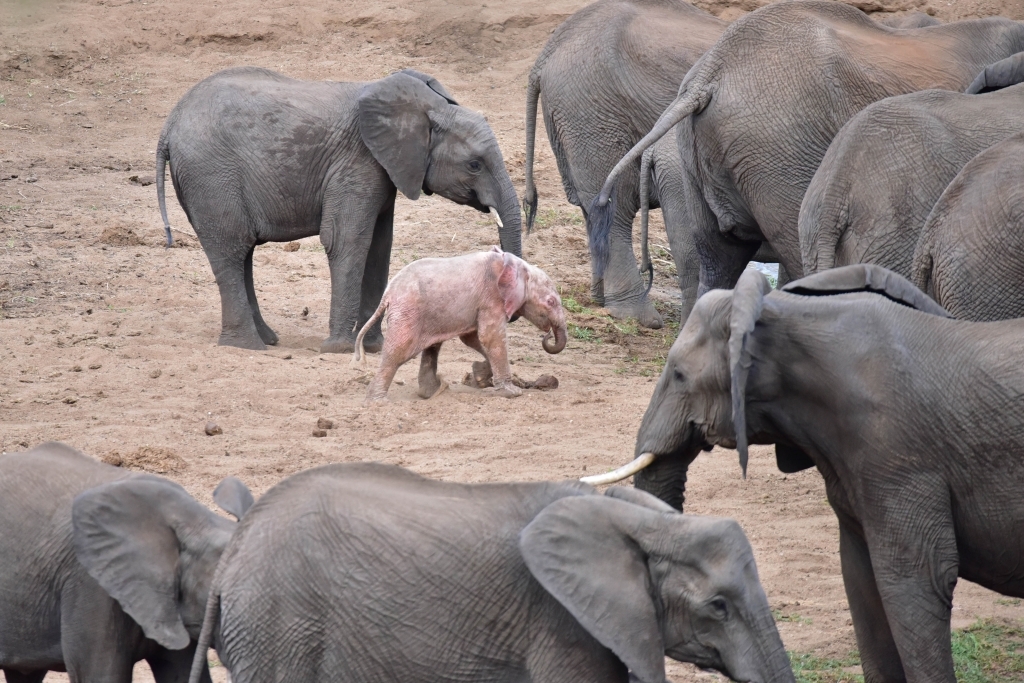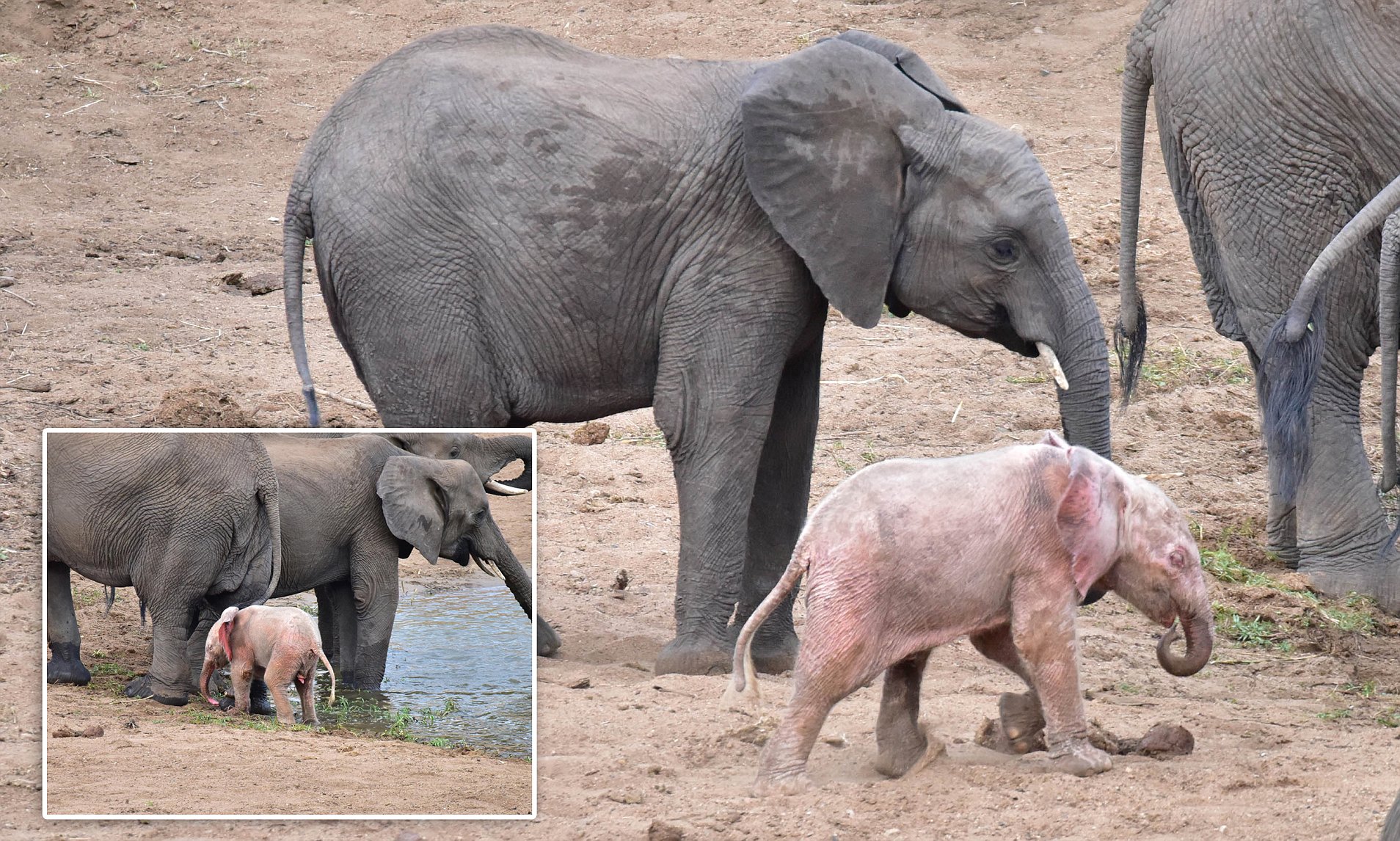Albinism is a disease which causes a complete lack of melanin, this includes natural pigments that give colour to skin and eyes. Because of this, true albino animals don’t only have reddish pink skin, but they would also have very pale eyes as well (often pink or red as the blood vessels show through). Leucisim causes only a partial loss of pigmentation, so it doesn’t affect the eyes.
Whether albino or leucistic, this tiny elephant has a tough road ahead of it. Animals carrying these conditions stick out of their natural habitat making them more susceptible to attack from predators. They are often sensitive to light and may have health problems associated with genetic mutations.
Unfortunately, albino/leucistic wildlife are easy targets for natural predators as they stand out in their habitat and struggle to blend in. However, it’s not to say that the adorable calf won’t make it through to adulthood – we’ve seen sightings of adult cougars, dolphins and humpback whales which suggest that some all-white individuals do manage to beat the odds.


Albinism is somewhat common in Asian elephants, but there are only a handful of sightings on record when it comes to their larger African cousins. In the Greater Kruger Park, the last known sighting dates back to 2016 when a calf, similar in age and appearance to the latest find, was spotted in the north of the reserve.
Just across the border in the country of Botswana, an albino calf was photographed by a BBC film crew in 2009. This white youngster seemed to show signs that it was aware of its increased susceptibility to the harsh African sun. “Already the two-to-three-month-old calf seems to be walking in the shade of its mother,” Ecologist Dr Mike Chase told the BBC at the time. “I have learned that elephants are highly adaptable, intelligent and masters of survival.”















.jpg&w=360&h=205&q=60&zc=2&cc=000000)






![Funny Golden Retriever Attacks His Human Mom [TRY NOT TO LAUGH] Funny Golden Retriever Attacks His Human Mom [TRY NOT TO LAUGH]](timthumb.php?src=https://www.awesomeworking.xyz/images/CrlPvI3LI1g.jpg&w=360&h=205&q=60&zc=2&cc=000000)

